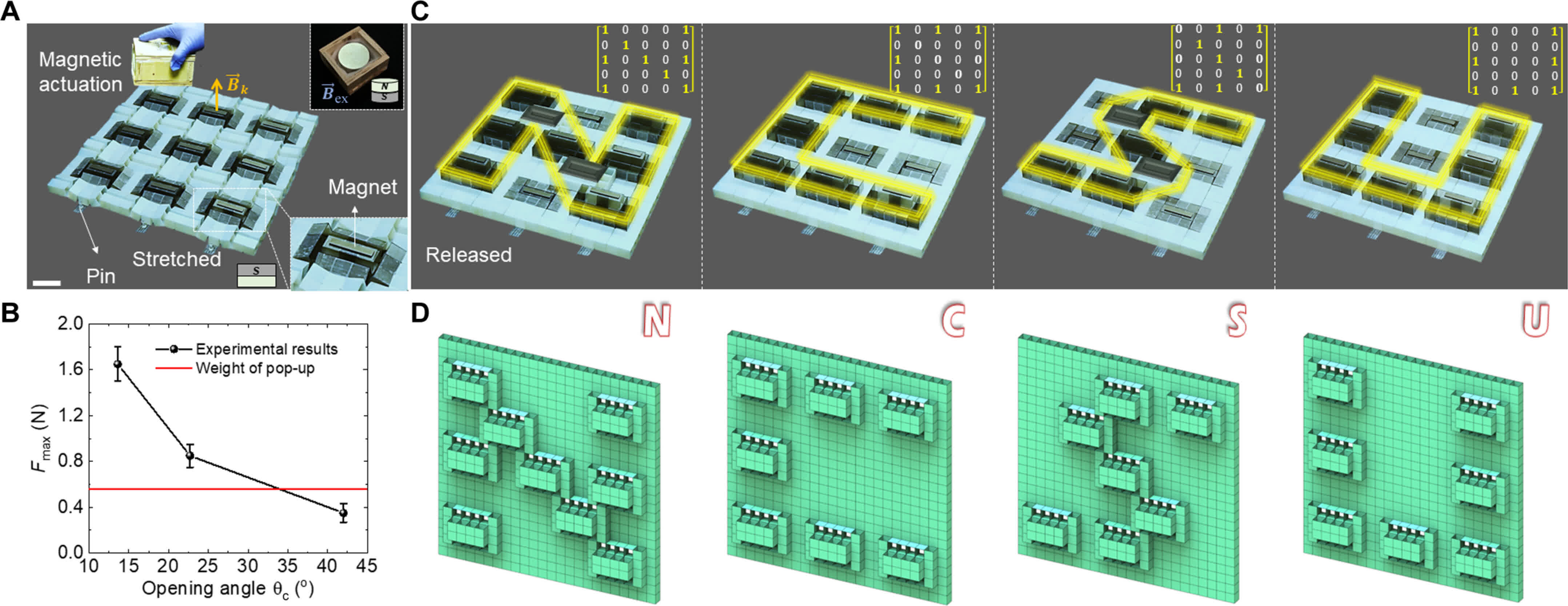In a nutshell: In a world where computers keep getting smaller and more compact, researchers at North Carolina State University have gone in the opposite direction. They’ve created a mechanical computer that requires physical pushing and pulling to input, store, and manipulate data. It accomplishes this using patterns of rigid plastic cubes, completely ditching silicon chips and electronics.
The basic building blocks are 1-centimeter polymer cubes joined together into functional units of 64 interconnected cubes. The cubes are linked by stretchy elastic tape that allows the structures to be reconfigured by pulling on the edges. When you let go, the tape contracts and lock the new cube positions in place, much like a 3D puzzle.
The upward and downward positions of the individual cubes within each 64-cube unit essentially act as the 1s and 0s of binary data. By pushing a cube up or down, you are writing a bit. Chain multiple units together, and you can encode more complex data using the precise geometry of the 3D structure.
The system can be set up for manual control by pushing the cubes around directly, or you can use a magnetic plate to remotely reconfigure the structures with magnetic fields.

The inspiration came from the Japanese art of kirigami, which involves intricate cutting and folding of paper. By applying those same folding principles to 3D materials like these cube grids, the researchers unlocked a mind-boggling number of possible configurations to represent data.
For instance, with just a simple nine-unit cluster, there are over 362,000 possible binary configurations to play with. However, the researchers say the potential goes far beyond just binary encoding. The cubes can stack up to five high, opening the door to storage schemes that crunch significantly more data per unit.
Study co-author Yanbin Li noted that being able to create unique 3D data architectures could enable entirely new forms of encryption and physical passwords. The team also imagines these transformable 3D structures could have applications in haptic computing and interfaces that convey information through physical shapes rather than pixels.
Of course, this is still extremely early-stage research. The current kirigami prototypes simply demonstrate the underlying mechanical principles – actually developing coding architectures and user interfaces is a whole other challenge.
You can explore the workings of this machine further in the paper, “Reprogrammable and Reconfigurable Mechanical Computing Metastructures with Stable and High-Density Memory,” published in the journal Science Advances.



